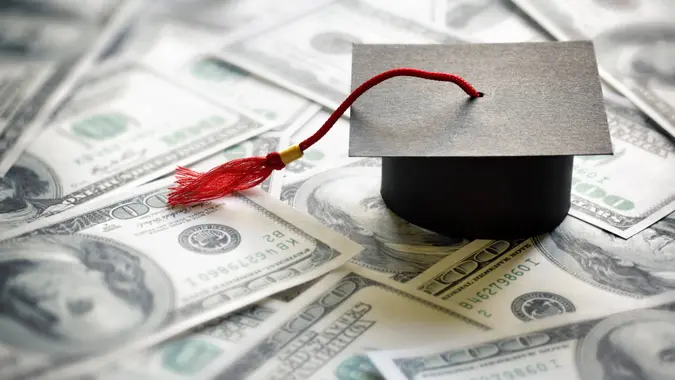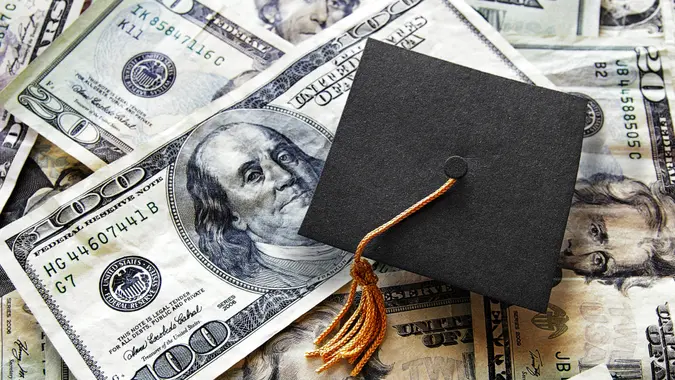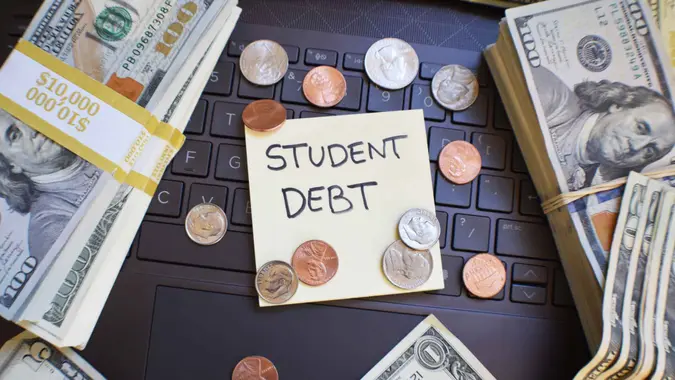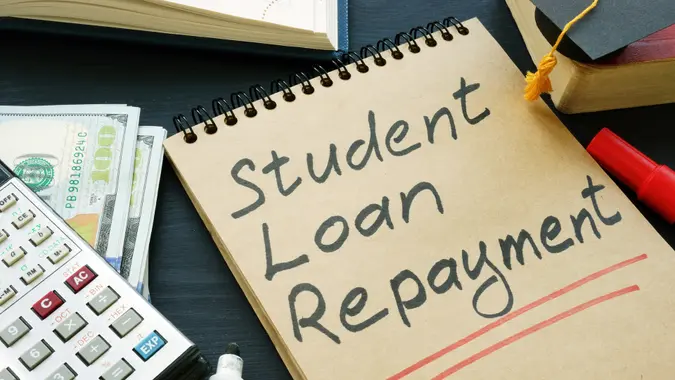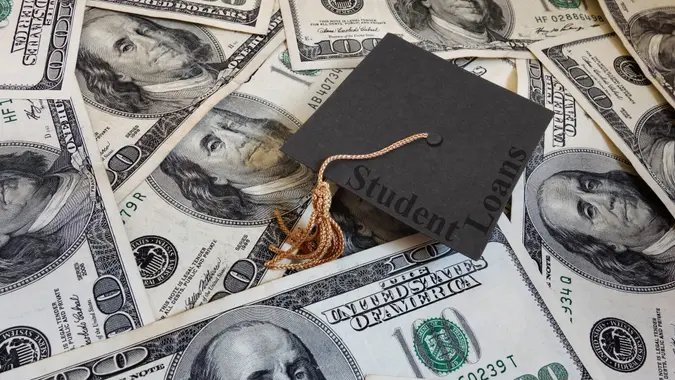Building Wealth: How Long Will It Take While Paying Off Student Loans?

Commitment to Our Readers
GOBankingRates' editorial team is committed to bringing you unbiased reviews and information. We use data-driven methodologies to evaluate financial products and services - our reviews and ratings are not influenced by advertisers. You can read more about our editorial guidelines and our products and services review methodology.

20 Years
Helping You Live Richer

Reviewed
by Experts

Trusted by
Millions of Readers
Student loans are notorious for having lasting effects on college graduates’ finances, with the average loan taking 21 years to be paid off, according to Saving For College. That being said, the average borrower takes too much and doesn’t have a solid understanding of loan repayment. For anyone interested in lessening their financial stress, you do have some options, like refinancing, or even lowering your payment amount with the help of strong credit or a co-signer.
That 21-year average is rooted in the variable nature of student loans. The type, amount, interest rate, presence of deferments and forbearances, if you need to borrow extra — all of these elements affect the time it may take you to pay off your loan. The two main types of loans are federal and private. Private student loans can have more varied repayment periods because they are less standardized.
Federal loans are either subsidized or unsubsidized. For subsidized loans, while the student’s loans are in deferment — the student is in-school, facing economic hardship or unemployment — the interest is paid by the federal government. For unsubsidized loans, the interest continually accrues. Concerning repayment of a federal loan, there are fixed repayment plans and income-driven repayment (IDR) loans.
Fixed Repayment Plans
Fixed repayment plans are based on the monthly amount owed, interest rate, and repayment time period. The Standard Repayment Plan is fixed so that the loans are paid off within 10 years (or up to 30 for consolidated loans), per the Department of Education. The Graduated Repayment Plan is also based on a 10-year-or-less period (excepting consolidated loans), though the payments are initially lower before increasing every two years. The Extended Repayment Plan gets paid off within 25 years — though to be eligible for this plan, the student must have more than $30,000 in outstanding direct roans or FFEL (Federal Family Education Loan) Program loans, whichever of the two they borrowed from.
As a general rule, the longer the repayment, the more time interest has to accrue, resulting in a more expensive cost to repay.
IDR Plans
There are four IDR plans. For the Saving on a Valuable Education (SAVE) Plan (which used to be known as the REPAYE plan), the monthly payment amount is based on 10% of the borrower’s discretionary income.
The Pay As You Earn (PAYE) Repayment Plan uses that same 10%, though it will never be more than what would be paid using the Standard Repayment Plan.
The Income-Based Repayment (IBR) Plan is either 10% or 15%, and also never more than the Standard.
Finally, the Income-Contingent Repayment (ICR) Plan is the lesser of either 20% of discretionary income or the amount that would be paid with a fixed payment over 12 years as adjusted based on income.
Paying Back Your Student Loan
With a basic idea of the different plans, here are ways that you can potentially shorten or lengthen how long it takes you to repay your loan.
By making extra payments, you lessen the total amount you originally borrowed at. The aforementioned deferments allow you to temporarily cease repayments, potentially without accruing interest, though forbearances guarantee further interest.
Through consolidation, you can combine multiple federal loans into a single loan, resulting in a single monthly payment.
Lastly, there is refinancing, which has you paying during a longer period, but for less each month — and with lower interest.
More From GOBankingRates
 Written by
Written by  Edited by
Edited by 



